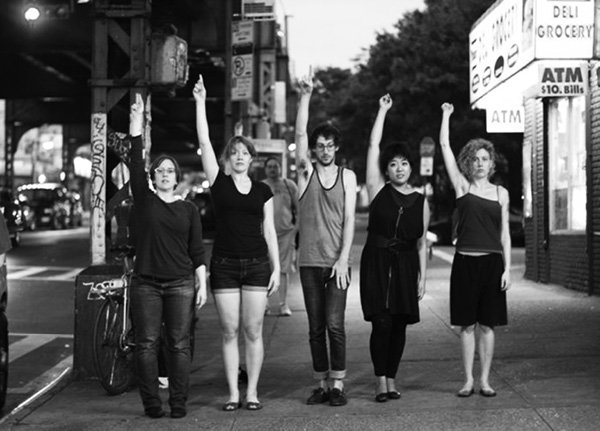
NATURE FETISH
first performed on January 26, 2012
University Settlement, New York, NY
performed thirteen times in 2012
PANOPLY PERFORMANCE LABORATORY
Jessica Bathurst, Arla Berman, Cory Bracken, Matthew Gantt, Devlin Goldberg, Katie Johnston, Brian McCorkle, Natasha Missick, Esther Neff, Michael Newton, Ellen O’Meara, Dave Ruder, audience members, public participants, 20+individual artists
Brooklyn, NY
998979868p998979868a998979868n998979868o998979868p998979868l998979868y998979868l998979868a998979868b998979868@998979868g998979868m998979868a998979868i998979868l998979868.998979868c998979868o998979868m
panoplylab.org
NATURE FETISH
PANOPLY PERFORMANCE LABORATORY
“Nature Fetish” collectively theorized “the nature of nature.” It began with attempts to “capture nature” by videotaping, interviewing and performing academic research. We then facilitated public performance sessions at University Settlement in NYC, using discussion, improvisation, co-creation, graphic scoring and other performative envisioning and philosophizing tactics to amass perceptions and conceptions regarding ecologic and ecosystem structures, empiricity, organicism, human nature, artificiality vs. authenticity and much more. These performances, realized improvisationally by all participants, concluded after five months. Brian McCorkle and Esther Neff then took on the roles of composer and librettist/director (respectively) to “naturally select” performance material and frameworks for both indeterminate and constructed systems. This natural selection was performed over several months, including performances in April at University Settlement and several short-form, site-specific duo performances in Berlin, Germany in May, 2012 during MPA-B.
A body of performers (listed en face) rehearsed selected material and frameworks, learning through-written music and text and practicing structured improvisation for eight performances at Grace Exhibition Space in July, 2012. These performances of the opera as a final state involved conditions (the space, the opera’s book, the memories of the performers), decisions (between materials, objects, actions, interactions), and chance (indeterminacy, live elements, improvisation). The first episode was performed on the street and implicated participants in binary code, attempting to deal with Bushwick/Bed-Stuy as “nature.” The other episodes involved a large graphic score on which participating audience members placed gold models of spores and seeds, choral sequences, emphasis on speech acts, and actions with lotion, skittles, fake flowers, potted tomatoes, rope, concrete ears of corn, keyboard/synthesizer, percussion, clarinet, saxophone, flute, banjo and voices.
“Nature Fetish” also involved performances by 20+ individual artists and groups who were invited to deal with six different constructed frameworks for relationships between performance and nature. These performances ranged from 10-45 minutes in length and were curated by Esther Neff. Gaps between human cognition and hyper-complexity of natural systems, the problematics of human attempts to cognize “nature” via dichotomization, delineation and language, genealogies of conceptions about “nature,” and human performance with and as “nature” were the core concerns emerging from this project at large.